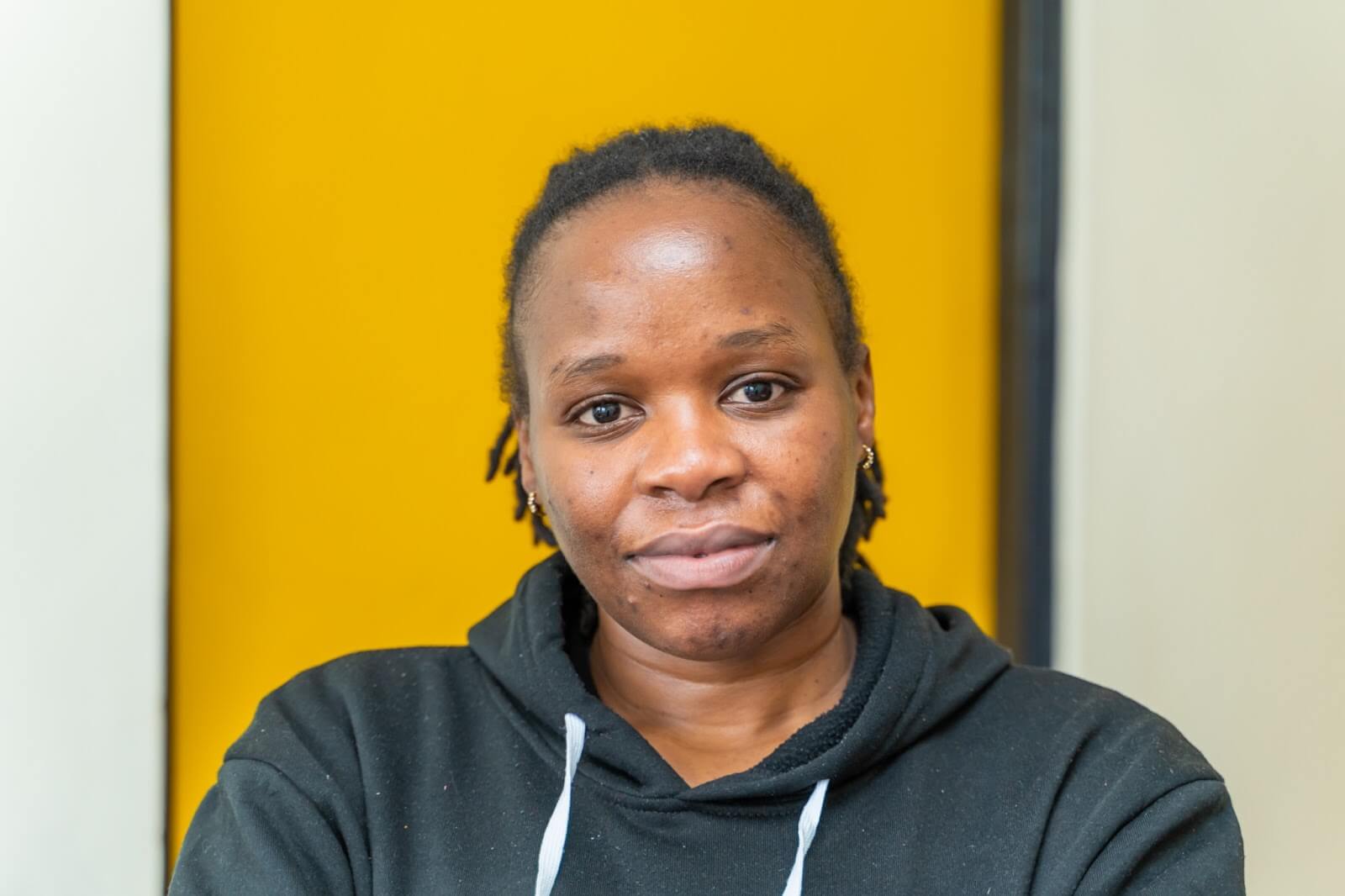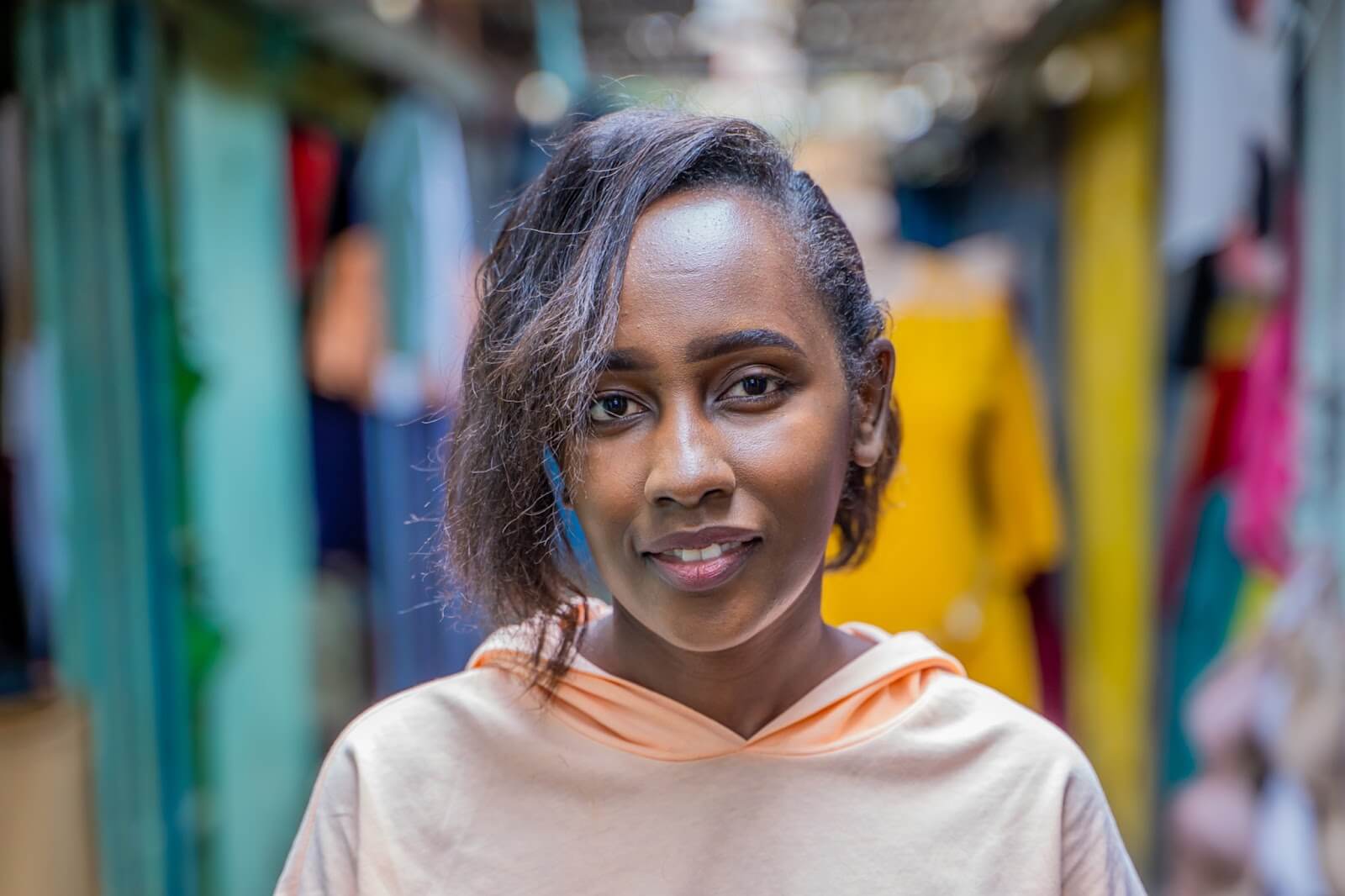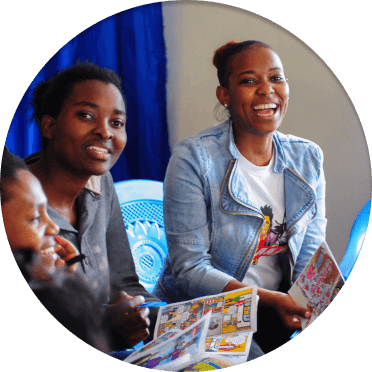I believe things can get better in the future – but I worry about it too.
When asked, more than 83% of young Kenyans report feeling hopeful about the future.53 Despite the instability of Covid-19, an economic downturn and another election cycle, they believe their lives will get better in the years to come.
However, this generation are also clear-eyed about the challenges they can see coming in the future. In the first three sections, we’ve looked at the trends, opportunities and challenges they’re navigating in work, in their relationships and in the governance of their country.
In this section, we’re going to look at three ‘newer’ trends that young people have raised more frequently in the last two years. Three trends that this generation think could affect all areas of their lives and their futures.
Technology
Smartphones hold big promise – but rural communities are getting left behind

The rapid increase in smartphones and internet access across the ‘mobile continent’ has been much discussed, and the economic and social promise a mobile transformation might bring has been much-anticipated.
Young Kenyans tend to be more grounded about the promise of mobile than the development community (they talk about their phones as an extension of their current lives – rather than something that ‘transforms’ their life or behaviour.) However, this generation is also acutely conscious that having access to a mobile, and a smartphone in particular, opens up some important opportunities: from work to socialising and dating. And they’re worried about getting left behind.
Since 2018, smartphone ownership has doubled
While the economic strain of the pandemic slowed its acceleration, basic smartphones and data or service-bundles have become more affordable. As a result, smartphone penetration has continued to rise rapidly over the last six years.
However, as technology drives forward, some young people are still missing out. The urban-rural digital divide is overtaking digital gender disparity in Kenya, affecting young girls from rural communities the worst.
The smartphone gap is closing:
But urban-rural disparity is overtaking the gender divide
As with a range of the topics we’ve discussed, access to technology and to digital spaces is often limited by a combination of structural and economic forces and social norms.
Faced with a much more challenging economic landscape, young people in rural areas are missing out on advances in technology. Restrictive gender norms mean that girls are too often denied access to digital spaces – or, when economic challenges bite, they are the first to lose access.
While young people are keen to get connected, they also raise concerns about the new challenges and risks that smartphones are creating. From the rise of fake news and hate speech, to online radicalisation and the impact of porn, to the dominance of online gambling – young people are calling for skills and support to navigate a mobile-first world.
Mental health
‘We need to talk’ – It’s time to address Kenya’s mental health crisis
Like with countries around the world, the Covid-19 pandemic placed a significant strain on young people’s mental health in Kenya. However, it also created space for a new conversation as discussions about the effects of school closures, lockdowns and curfews allowed young people to talk about their own mental health, and the wellbeing of their friends.
Early data from the last two years suggests that 6 in 10 young people have experienced challenges with their mental health, with the majority of those reporting experiencing feelings of depression, anxiety or panic and panic attacks.
Half of young Kenyans report struggling with their mental health
Our research shows that the term ‘stress’ is used to describe a wide range of issues, including more serious mental health conditions. As a result, without the knowledge and vocabulary to use, if a young mother who is experiencing postpartum depression asks for help with ‘stress’, they are likely to experience rejection and judgement, which might prevent them from seeking care.
Faced with a growing mental health crisis, young Kenyans say their communities need more support: support to build improved ‘mental health literacy’ to give people the right terms to talk about their experiences and to have more informed conversations to help reduce stigma; increased investment in mental health services and information about how to support their families and identify people in need.
Climate change
Climate change is here – this generation want to know how to thrive, not just survive
It’s unsurprising that 85% of young people in Kenya believe the climate is changing. This generation is living through it. Droughts have pushed millions of Kenyans into food insecurity; flooding has displaced people and drowned livestock; locusts have destroyed crops.58
This generation is increasingly aware that the changing climate will affect every aspect of their futures. In particular, young people in rural areas often raise concerns about the impacts of changes in rainfall patterns on both food and water security. And as famine ‘looms’59 across East Africa – experts confirm that they’re right to be alarmed.
Climate change is a day-to-day reality for this generation
However, while young people recognize the threats posed by climate change, they are also increasingly aware that a changing environment and a growing ‘green economy’ means there’ll be increased demand for work in some sectors, as well as new work opportunities.
For example, over the last few years more young people have been showing an interest in starting an agriculture ‘hustle’ or micro-business, especially in the sectors with a quick return on investment such as poultry. That’s good news – but it’s only the first step. Organisations from the Kenyan Government to the World Bank highlight that engaging Kenya’s young population in every part of the value-chain is essential to driving the ‘agribusiness’ transformation the country needs to adapt to a changing climate. But as you can read in our agriculture report, too often, young people are being locked out of this vital industry. If agriculture wants to attract young people at scale, it’s in desperate need of a rebrand.62
How many young people would like to try agri-food business ideas?
In addition, in a separate study, we found that young people are already engaging in Kenya’s reuse-and-recycle value chain – particularly as collectors of reusable materials, and in upcycling and repair work.65
However, young Kenyans are quick to highlight the challenges they face in navigating the green economy. Our research shows that in emerging ‘green’ or ‘circular’ economy jobs, young people are often earning very little ($2 a day or less) and, without relevant skills and support, aren’t able to access or use new technologies or equipment.
In just a few years, this generation will represent the majority of the working population, and can help to power Kenya’s response to the climate crisis. They can help to ensure their communities adapt, survive and thrive in an unstable future – but only if they’re placed at the centre of the country’s climate resilience strategies.

These trends are for sharing
A final note for committed readers. These five chapters are a distillation of the most important trends we’ve heard from young people across Kenya over the last seven years. They represent the challenges and the opportunities that we think matter most – that we think have the potential to shape the lives of the most important generation in Kenya’s history.
But if there’s one trend that we hear most consistently it is: “no one listens to us” or, as one Shujaaz fan put it recently, “We’re ready to share our problems and opinions, can you help us reach the people at the top?”.
This project is our attempt to do exactly that. But we need your support to reach those people ‘at the top’; that’s the people designing the policies, programmes and interventions that will shape this generation’s future. So, here’s our final ask: if you’ve found these trends useful, or the words from young people insightful – share them.

53 Shujaaz Inc nationally-representative survey of Kenyan youth 15-24 years old Wave 6 (N=2,006), November 2021-January 2022.
54 Ibid.
55 Ibid.
56 Ibid.
57 Ibid.
58 Bloomberg (August 17, 2022)
59 Ibid.
60 Shujaaz Inc nationally-representative survey of Kenyan youth 15-24 years old Wave 6 (N=2,006), November 2021-January 2022.
61 Ibid.
62 Shujaaz Inc (2021, Issue 3) Shujaaz Inc Compass: Navigating the Road Ahead. How Young People Can Lead Kenya’s Agribusiness Transformation.
63 Shujaaz Inc nationally-representative survey of Kenyan youth 15-24 years old Wave 6 (N=2,006), November 2021-January 2022.
64 Ibid.
65 Munro, B., Rowe, K., Losneanu, A., Oldfrey, B (2022). Landscaping the repair and reuse economy in Kenya, Better Futures CoLab.